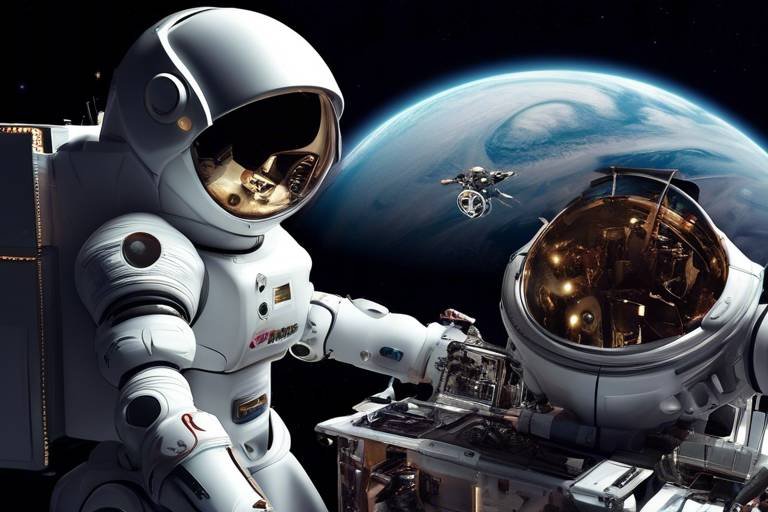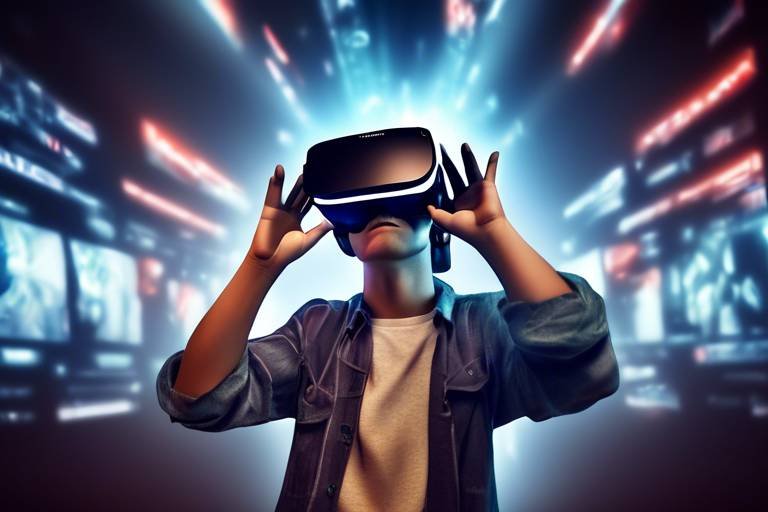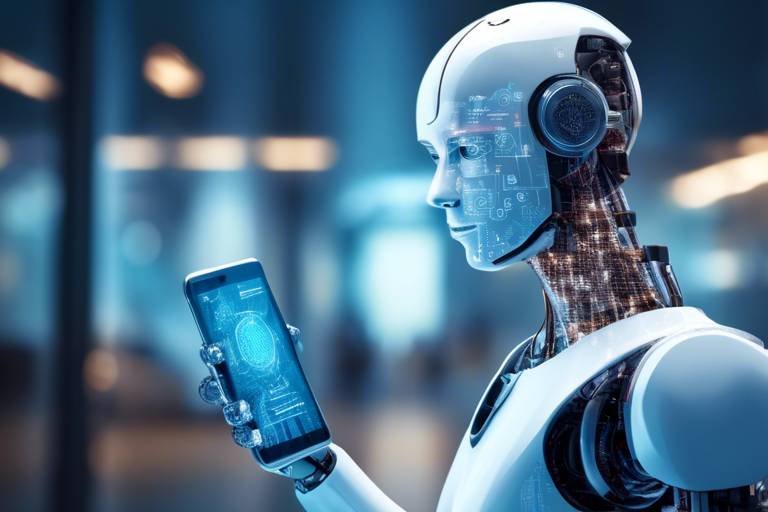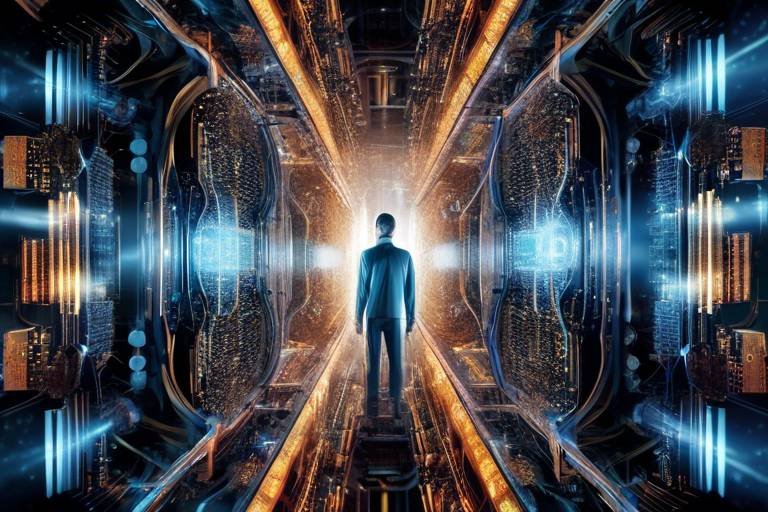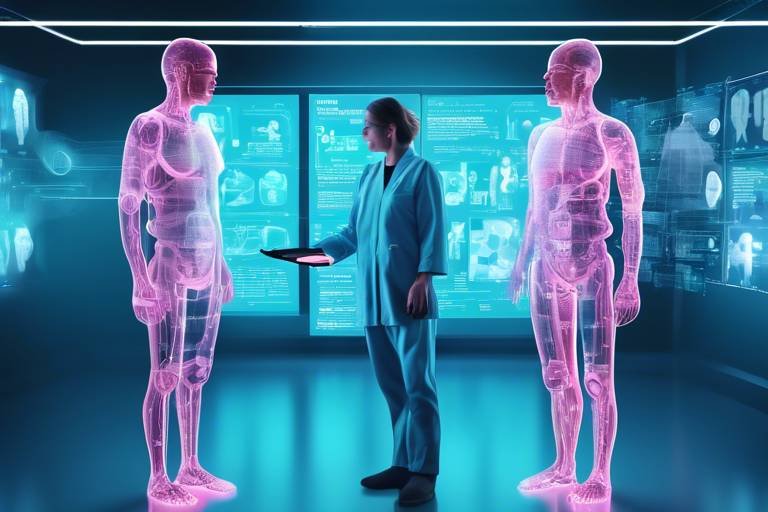The Role of Robotics in Space Exploration
Space exploration has always been a frontier of human ingenuity and curiosity, and with the advent of robotics, we are now capable of reaching new heights—quite literally! Robotics is not just a tool; it’s a revolution that is transforming how we explore the cosmos. Imagine sending a robot to a distant planet, equipped with the ability to analyze soil, gather data, and even search for signs of life, all while we sit back on Earth, eagerly awaiting the findings. This is no longer science fiction; this is our reality!
Robotics has become an essential part of space missions, enabling us to venture further and more safely than ever before. From autonomous rovers on Mars to sophisticated landers on the Moon, robotic technologies are enhancing our capabilities and pushing the boundaries of what is possible. These machines are designed to withstand the harsh conditions of space, where temperatures can plunge to extreme lows, and radiation levels can be lethal. They are our eyes and ears in the universe, collecting data that would be impossible to gather otherwise.
But what makes robotics truly fascinating is not just their ability to function in extreme environments, but also their capacity for autonomy. With advancements in artificial intelligence and machine learning, robots can now make decisions on their own, adapting to the unpredictable challenges of space. This autonomy is crucial, especially in missions to distant planets like Mars, where communication delays can hinder real-time human intervention. Imagine a rover navigating rocky terrain or conducting experiments without waiting for commands from Earth—it’s a game changer!
Furthermore, robotics is paving the way for future human colonization efforts. As we look towards establishing a permanent presence on the Moon or Mars, robots will play a vital role in preparing these environments for human habitation. They can assess resources, build infrastructure, and even conduct preliminary surveys to ensure safety for astronauts. This synergy between humans and robots is essential for the long-term success of space exploration and colonization.
In conclusion, the role of robotics in space exploration is not just significant; it is transformative. These machines are enhancing our mission capabilities, allowing us to uncover the mysteries of our universe, and preparing the way for future human endeavors. As we continue to innovate and push the boundaries of technology, the possibilities for robotic exploration are limitless. Who knows what incredible discoveries await us just beyond our planet?
- What are the main advantages of using robots in space exploration?
Robots can operate in extreme conditions, perform tasks autonomously, and gather data from locations that are too dangerous for humans. - How does AI improve robotic missions?
AI enhances decision-making, navigation, and data analysis, allowing robots to adapt to unforeseen challenges in real-time. - What are some examples of robotic missions?
Notable missions include NASA's Curiosity and Perseverance rovers on Mars, as well as the Chang'e program exploring the Moon. - Will robots play a role in future human colonization of other planets?
Absolutely! Robots will help build infrastructure and prepare environments for human settlers, ensuring safety and sustainability.

Advancements in Robotic Technology
Recent breakthroughs in robotic technology have significantly improved the capabilities of space missions. These advancements are not just incremental; they represent a transformative leap that enhances our ability to explore the cosmos. Imagine sending a robot into the depths of space, equipped with the latest in artificial intelligence, cutting-edge materials, and state-of-the-art sensors. This combination allows for more autonomous and efficient robotic systems, enabling them to operate in environments that were once deemed too hostile for exploration.
One of the most exciting developments is the integration of AI into robotic systems. With AI, robots can make real-time decisions based on the data they collect, allowing them to adapt to unexpected challenges. For example, if a rover encounters an obstacle on Mars, it can analyze its surroundings and determine the best path forward without waiting for instructions from Earth. This level of autonomy is crucial for missions that venture far from home, where communication delays can hinder timely decision-making.
Moreover, advancements in sensor technology have also played a pivotal role. Modern robots are now equipped with an array of sensors that can measure temperature, pressure, and even chemical compositions. These sensors enable robots to gather detailed information about their environments, leading to groundbreaking discoveries. For instance, the sensors on the Curiosity Rover have provided invaluable data about Mars' atmosphere and surface conditions, helping scientists understand the planet's history and potential for life.
In addition to AI and sensors, the development of lightweight materials has revolutionized the design of robotic systems. Engineers are now able to create robots that are not only strong and durable but also lightweight enough to be launched into space without excessive fuel costs. This is particularly important for missions to distant planets, where every kilogram counts. By utilizing advanced composites and materials, engineers can build robots that can withstand harsh conditions while remaining efficient in their operations.
To summarize, the advancements in robotic technology are reshaping the landscape of space exploration. The combination of AI, sophisticated sensors, and lightweight materials is enabling missions that were once thought impossible. As we continue to push the boundaries of what is achievable in space, these technologies will play a crucial role in uncovering the mysteries of the universe.
- What are the key advancements in robotic technology for space exploration? Recent advancements include the integration of AI for autonomous decision-making, advanced sensors for data collection, and lightweight materials for efficient design.
- How does AI improve robotic missions? AI allows robots to make real-time decisions, adapt to unforeseen challenges, and navigate complex terrains without human intervention.
- What role do sensors play in space robotics? Sensors enable robots to gather detailed environmental data, which is crucial for understanding celestial bodies and making scientific discoveries.
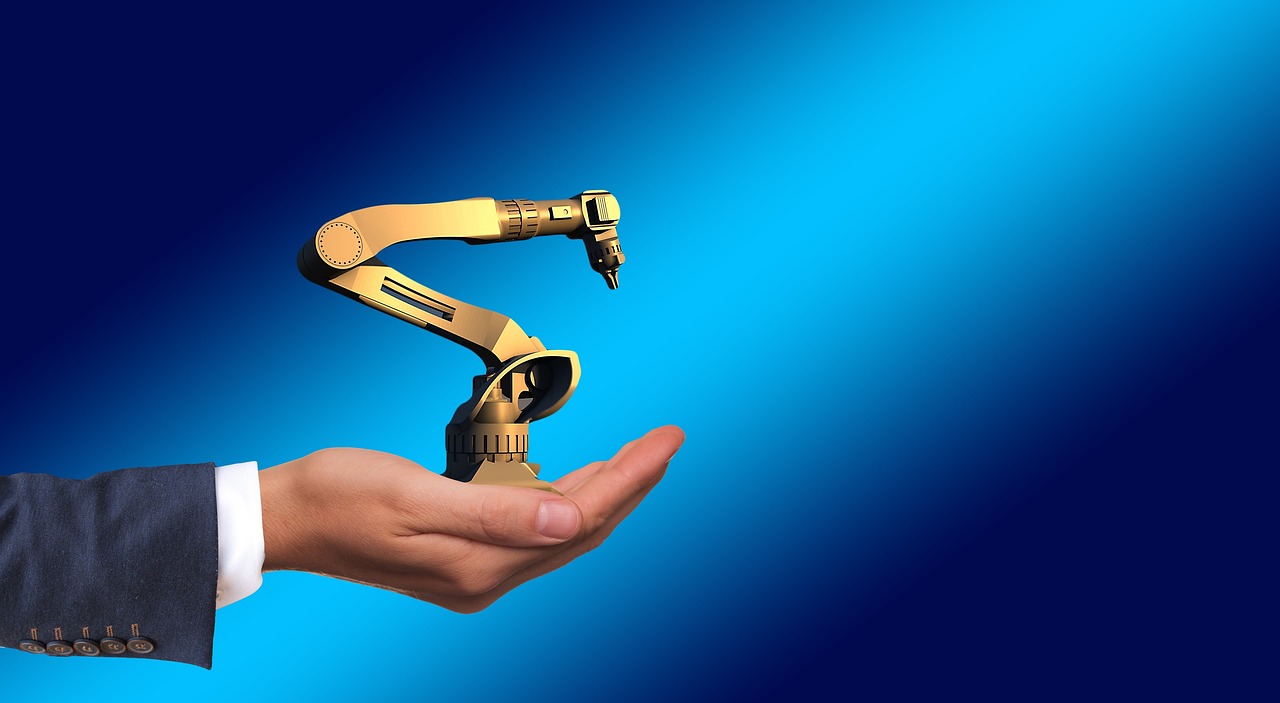
Robotic Missions to Mars
Mars has long captivated the imagination of scientists and dreamers alike, and it stands as a primary focus for robotic exploration. With its intriguing geology, varied climate, and potential for past life, Mars offers a treasure trove of mysteries waiting to be uncovered. Over the years, numerous robotic missions have been launched, each contributing invaluable data and insights that shape our understanding of this enigmatic planet. From the early days of flybys to the sophisticated rovers that roam its surface today, these missions have paved the way for future explorations and perhaps even human colonization.
The significance of robotic missions to Mars cannot be overstated. They serve as our eyes and ears on the Red Planet, gathering data that would be impossible to collect otherwise. For instance, missions like the Mars Reconnaissance Orbiter and Mars Global Surveyor have provided detailed maps of the Martian surface, highlighting features such as ancient riverbeds and polar ice caps. These findings not only help scientists understand the planet's history but also inform future mission planning.
Among the most notable robotic missions are the Spirit and Opportunity rovers, which landed on Mars in 2004. These twin robots were designed to explore the Martian terrain and search for signs of past water. Their discoveries were groundbreaking, revealing that Mars once had conditions suitable for life. The rovers operated far beyond their expected lifetimes, with Opportunity traveling over 28 miles before losing contact in 2018. Their success has set a high bar for subsequent missions.
The Curiosity Rover, which landed in 2012, is another landmark in Martian exploration. Equipped with an array of scientific instruments, Curiosity has been dissecting the Martian soil and atmosphere, providing insights into the planet’s habitability. Its findings have confirmed the presence of ancient lakebeds and organic molecules, essential clues in the search for life. The rover's ability to analyze samples on-site and transmit data back to Earth has revolutionized how we study Mars.
Looking forward, the upcoming Perseverance Rover aims to build on the successes of its predecessors. Launched in 2020, Perseverance is tasked with searching for signs of ancient life and collecting samples that may one day be returned to Earth. This mission represents a significant leap forward, as it not only seeks to understand the planet's past but also lays the groundwork for future human exploration.
In addition to the scientific objectives, robotic missions to Mars face several challenges. The harsh environmental conditions, including extreme temperatures, dust storms, and radiation, pose significant risks to both equipment and data collection. Furthermore, communication delays between Earth and Mars can complicate mission operations. For instance, signals can take anywhere from 4 to 24 minutes to travel between the two planets, making real-time control impossible. This necessitates a high degree of autonomy in robotic systems, allowing them to make decisions and execute commands without immediate human input.
In summary, robotic missions to Mars have profoundly enhanced our understanding of the planet and its potential for life. As technology continues to advance, the exploration of Mars will become increasingly sophisticated, paving the way for future discoveries and the eventual human presence on the Red Planet. The journey has just begun, and as we continue to send our robotic emissaries to explore Mars, who knows what astonishing secrets they might unveil?
- What is the main purpose of robotic missions to Mars?
The primary purpose is to gather data about Mars' geology, climate, and potential for past life, which helps scientists understand the planet's history and inform future exploration efforts.
- How do robotic rovers communicate with Earth?
Robotic rovers communicate with Earth via radio signals, which can take several minutes to reach their destination due to the distance between the two planets.
- What challenges do robotic missions face on Mars?
Challenges include harsh environmental conditions, such as extreme temperatures and dust storms, as well as communication delays that complicate real-time operations.

Curiosity Rover's Discoveries
The Curiosity Rover has been a game-changer in our quest to understand Mars. Launched in 2011, this robotic marvel has traveled over 28 kilometers across the Martian surface, sending back a treasure trove of data that has reshaped our understanding of the planet. One of its most significant discoveries is the detection of organic molecules, which are the building blocks of life. This finding has sparked excitement among scientists, as it suggests that Mars may have had the necessary ingredients for life in its ancient past.
In addition to organic molecules, Curiosity has also analyzed the Martian soil and atmosphere, revealing crucial information about the planet's geological history. For instance, it discovered that Mars once had conditions suitable for liquid water, which is essential for life as we know it. The rover's data indicates that ancient lakes existed on Mars, and these findings are critical in understanding whether life ever existed there.
Curiosity's suite of scientific instruments is nothing short of astounding. Equipped with a drill, it can collect rock samples and analyze them on-site. This capability allows scientists to conduct complex analyses without needing to return samples to Earth. The rover's findings are often shared in real-time, providing immediate insights into the Martian environment. Here’s a brief overview of some of its major discoveries:
| Discovery | Significance |
|---|---|
| Organic Molecules | Indicates potential for past life. |
| Ancient Lakebeds | Suggests Mars had liquid water. |
| Radiation Levels | Informs future human missions. |
| Seasonal Methane Fluctuations | May indicate biological processes. |
Moreover, Curiosity has revealed seasonal changes in methane levels in the Martian atmosphere. This discovery raises intriguing questions about whether these fluctuations are linked to biological activity, which could indicate that Mars is not as lifeless as previously thought. Each of these discoveries enhances our understanding of Mars and fuels our curiosity about the possibility of life beyond Earth.
As the Curiosity Rover continues its mission, it not only enriches our knowledge of Mars but also sets the stage for future explorations. Its findings are paving the way for missions like Perseverance, which aims to search for signs of ancient life and collect samples for potential return to Earth. The legacy of Curiosity is not just in the data it has collected, but in the inspiration it provides for future generations of scientists and explorers.
- What is the main purpose of the Curiosity Rover? The primary purpose is to explore Mars and assess its habitability.
- How long has the Curiosity Rover been on Mars? It has been operational since August 2012.
- What are organic molecules, and why are they important? Organic molecules are carbon-based compounds, essential for life, indicating that Mars may have once supported life.
- What is the significance of finding water on Mars? Water is vital for life, and its presence suggests that Mars may have had conditions suitable for life in the past.

Technological Innovations of Curiosity
The Curiosity Rover is a marvel of modern engineering, equipped with a suite of advanced technologies that enable it to explore the Martian landscape like never before. One of its standout features is its drilling system, which allows the rover to collect soil and rock samples from beneath the surface. This is crucial because the Martian surface can be harsh and unyielding, hiding secrets that are only revealed below the top layer. The drill is not just any drill; it is designed to handle the unique challenges of Mars, including the planet's extreme temperatures and dust storms.
In addition to its drilling capabilities, Curiosity is outfitted with a range of scientific instruments that allow it to conduct in-depth analyses of the Martian environment. These instruments include:
- ChemCam: A laser that analyzes the composition of rocks and soil from a distance, providing immediate feedback on the chemical makeup of Martian materials.
- Sample Analysis at Mars (SAM): A sophisticated lab that analyzes samples for organic compounds and other chemicals that could indicate past life.
- Rover Environmental Monitoring Station (REMS): This instrument measures weather conditions on Mars, providing vital data on temperature, humidity, and wind.
Moreover, Curiosity employs a navigational system that combines advanced algorithms with real-time data. This allows it to navigate the rugged Martian terrain autonomously, making decisions about its path without waiting for commands from Earth. The ability to operate independently is essential, especially considering the significant communication delays due to the vast distance between Mars and our planet.
Curiosity's power source is another technological triumph. Instead of relying on solar panels, which can be less effective during dust storms, Curiosity uses a radioisotope thermoelectric generator (RTG). This provides a steady supply of energy, allowing the rover to operate continuously, day and night, regardless of environmental conditions. This innovation ensures that Curiosity can carry out lengthy scientific missions without interruption, further enhancing our understanding of Mars.
In summary, the technological innovations of the Curiosity Rover not only facilitate its exploration of Mars but also set a precedent for future missions. By combining a robust suite of scientific instruments with autonomous navigation and a reliable power source, Curiosity has paved the way for deeper investigations into the Martian environment, helping scientists unlock the mysteries of our neighboring planet.
Q1: What is the primary mission of the Curiosity Rover?
A1: The primary mission of the Curiosity Rover is to explore the Martian surface and assess whether Mars has ever had conditions suitable for life, particularly focusing on its geology and climate.
Q2: How does Curiosity communicate with Earth?
A2: Curiosity communicates with Earth using a combination of high-gain antennas and relay satellites orbiting Mars, allowing it to send data and receive commands.
Q3: What type of power source does Curiosity use?
A3: Curiosity uses a radioisotope thermoelectric generator (RTG) that converts heat from radioactive decay into electricity, providing a continuous power supply.
Q4: Can Curiosity operate autonomously?
A4: Yes, Curiosity can operate autonomously, using advanced navigation systems to make real-time decisions about its movements on the Martian surface.

Impact on Future Missions
The success of the Curiosity Rover has not only provided a wealth of information about Mars but has also significantly influenced the design and objectives of future missions to the Red Planet. As scientists and engineers analyze the data collected by Curiosity, they are able to refine their strategies and technologies for upcoming explorations. One of the most notable successors is the Perseverance Rover, which aims to build upon Curiosity's findings and delve deeper into the search for ancient life on Mars.
Perseverance is equipped with advanced technologies that allow it to gather samples of Martian rock and soil, which are intended for potential return to Earth in future missions. This ambitious goal highlights a shift in focus from merely exploring the surface to actively collecting and analyzing samples that could provide definitive evidence of past life. The lessons learned from Curiosity's operations, including its navigation techniques and scientific instruments, have been instrumental in shaping Perseverance's capabilities.
Moreover, the integration of new technologies, such as AI and machine learning, has enhanced the decision-making processes for these robotic systems. For instance, the ability to autonomously select the most promising sites for exploration based on real-time data analysis is a game-changer. This not only increases the efficiency of the missions but also maximizes the scientific return on investment.
Looking ahead, the impact of Curiosity's mission can be summarized in several key areas:
- Enhanced Scientific Objectives: Future missions are likely to focus on more complex scientific questions, such as the search for biosignatures and the study of Martian geology.
- Improved Robotic Design: Insights gained from Curiosity will lead to the development of more robust and versatile robotic systems tailored for the harsh Martian environment.
- Collaboration with Human Missions: The data gathered will inform future crewed missions, ensuring that astronauts are better prepared for the challenges they may face on Mars.
Ultimately, the influence of the Curiosity Rover extends beyond its immediate findings; it sets the stage for a new era of exploration that promises to unlock the secrets of Mars and potentially pave the way for human colonization. Each mission builds upon the last, creating a cumulative knowledge base that will guide humanity's quest to understand our neighboring planet.
Here are some common questions regarding the impact of robotic missions on future explorations:
- What is the primary goal of future Mars missions? The primary goal is to search for signs of past life and gather samples that can be returned to Earth for detailed analysis.
- How do robotic missions assist human exploration? Robotic missions gather essential data and perform preliminary analyses, which help prepare for the safety and success of human missions.
- What technologies are being developed for future missions? Technologies such as advanced AI, autonomous navigation systems, and more resilient robotic designs are being developed to enhance mission capabilities.

Challenges Faced by Robotic Missions
Robotic missions to Mars and beyond are incredibly exciting, but they don't come without their fair share of challenges. Imagine sending a highly advanced robot to a distant planet, only to find that it can't function properly due to unforeseen obstacles. One of the primary challenges faced by these missions is the harsh environmental conditions of outer space. From extreme temperatures to radiation exposure, the elements can wreak havoc on even the most sophisticated machines. For instance, the surface of Mars can swing from a chilling -195°F (-125°C) at the poles during winter to a scorching 70°F (20°C) at the equator during summer. Such drastic changes require robust engineering and materials that can withstand these fluctuations.
Another significant hurdle is the communication delay that occurs when sending signals between Earth and distant robotic explorers. Depending on the position of Mars in relation to Earth, it can take anywhere from 4 to 24 minutes for a signal to travel one way. This delay means that real-time control of the robots is virtually impossible, forcing them to operate autonomously. While autonomy is a fantastic feature, it also introduces risks. What if the robot encounters a problem that requires immediate human intervention? The inability to react swiftly can lead to mission failures.
Furthermore, robotic missions must contend with technical malfunctions. Just like any machine, robots can experience breakdowns or software glitches. For instance, the Opportunity rover, which operated on Mars for nearly 15 years, faced numerous challenges, including dust accumulation on its solar panels, which ultimately led to its power failure. Engineers must anticipate potential failures and design redundancy systems to mitigate risks. This is a complex task, as each mission's unique environment may present unforeseen complications.
Lastly, there's the challenge of resource management. Robotic missions are often equipped with limited power supplies and must use their resources wisely. For example, rovers like Curiosity and Perseverance rely on solar power, which can be affected by dust storms on Mars. Engineers must carefully plan the mission's timeline and energy consumption to ensure that the robot can complete its objectives without running out of power. This delicate balance between exploration and resource conservation is crucial for the success of robotic missions.
In summary, while robotic missions have revolutionized our understanding of space, they face numerous challenges that require innovative solutions. As technology continues to advance, we can expect future missions to overcome these obstacles and push the boundaries of space exploration even further.
- What are the main challenges faced by robotic missions? Robotic missions face harsh environmental conditions, communication delays, technical malfunctions, and resource management issues.
- How do communication delays affect robotic missions? Communication delays can prevent real-time control of the robots, forcing them to operate autonomously, which introduces risks if immediate human intervention is needed.
- What happens if a robotic mission encounters a malfunction? Engineers design redundancy systems to mitigate risks and anticipate potential failures, but malfunctions can still lead to mission challenges.
- How is power managed in robotic missions? Rovers often rely on limited power supplies, such as solar energy, and must carefully plan their energy consumption to complete their objectives.

Robotics in Lunar Exploration
Robotics plays a crucial role in the exploration of the Moon, acting as our eyes and hands on the lunar surface. With the challenges posed by the Moon's harsh environment, including extreme temperatures and radiation exposure, robotic systems have become indispensable tools for gathering data and conducting experiments. These robotic missions not only collect valuable information about the Moon's geology and resources but also lay the groundwork for potential human colonization.
Recent advancements in robotic technology have led to the development of sophisticated landers and rovers capable of performing complex tasks autonomously. For instance, the Chang'e program from China has successfully sent robotic landers and rovers to explore the Moon, providing insights into its composition and geological history. Similarly, NASA's Artemis initiative aims to establish a sustainable human presence on the Moon, with robotics playing a key role in the preparatory phases of this ambitious project.
As we look to the future of lunar exploration, the capabilities of these robotic systems are expected to expand significantly. Advanced robotics will likely include:
- In-situ Resource Utilization: Robots will be designed to extract and utilize resources found on the Moon, such as water ice, which could support human life and fuel future missions.
- Construction and Maintenance: Robotic systems may be tasked with building habitats or other structures, ensuring that human explorers have safe and sustainable environments.
- Scientific Research: Enhanced sensors and analytical tools will allow robots to conduct experiments on the lunar surface, gathering data that can inform our understanding of the Moon and its potential for supporting life.
Moreover, the collaboration between humans and robots will be essential for the success of lunar missions. While robots handle hazardous tasks, humans can focus on strategic decision-making and scientific inquiry, enhancing the overall efficiency of exploration efforts. This partnership not only maximizes the strengths of both entities but also opens the door to exciting possibilities for future lunar colonization.
In conclusion, robotics is revolutionizing our approach to lunar exploration. As technology continues to advance, we can expect to see even more innovative robotic systems that will enable us to uncover the Moon's secrets and pave the way for a sustainable human presence. The role of robotics in this endeavor cannot be overstated, as it is the bridge that connects our dreams of exploration with the reality of what is possible.
- What are the main advantages of using robotics in lunar exploration? Robotics allows for safer and more efficient exploration of the Moon, enabling data collection and analysis in environments that are hazardous for humans.
- How do robotic missions prepare for future human colonization? Robotic missions gather crucial data on lunar resources and conditions, which informs the planning and logistics for future human missions.
- What types of robots are currently being used in lunar missions? Current missions utilize landers, rovers, and orbiters equipped with advanced sensors and tools to analyze the lunar surface and environment.
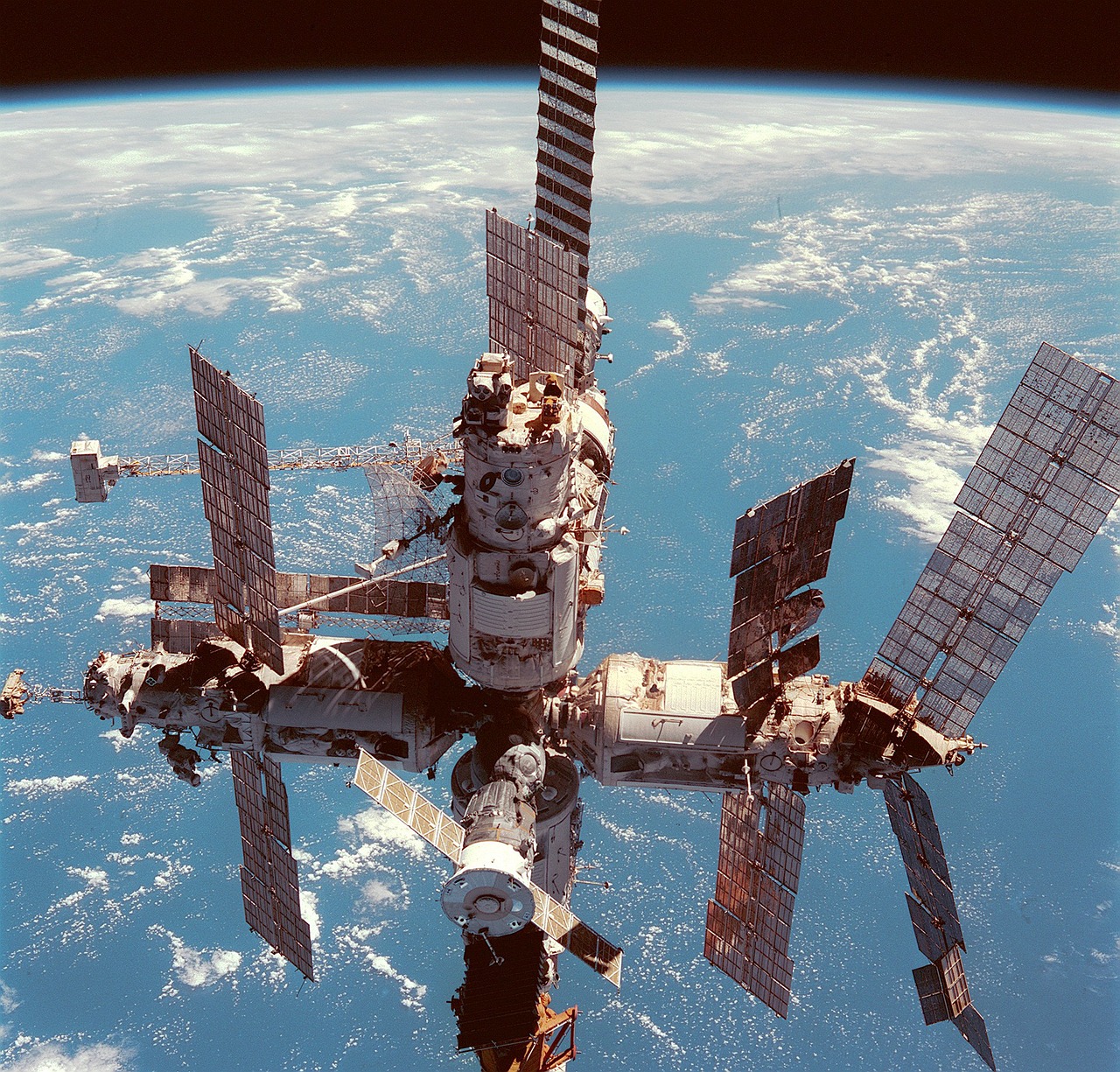
Recent Lunar Robotic Missions
The exploration of the Moon has taken significant strides in recent years, thanks to a series of groundbreaking lunar robotic missions. These missions are not just about reaching the Moon; they are about unlocking its secrets and laying the groundwork for future human exploration. With advancements in technology, robotic systems are now more capable than ever, providing us with invaluable data about our celestial neighbor.
One of the most notable programs is China's Chang'e program, which has made headlines with its ambitious objectives. The Chang'e 4 mission, for instance, made history by being the first spacecraft to land on the far side of the Moon in January 2019. This mission has provided a wealth of information about the Moon's geology and has allowed scientists to study the unique environment of the far side, which is shielded from Earth's radio interference.
Another key player is NASA's Artemis initiative, which aims to return humans to the Moon by the mid-2020s. As part of this initiative, robotic missions are being employed to scout potential landing sites and assess resources. The Artemis I mission, an uncrewed flight test of the Space Launch System (SLS) and the Orion spacecraft, is a precursor to future crewed missions. It will pave the way for subsequent missions that will utilize robotic landers to gather data and possibly collect samples.
These missions are not just about exploration; they also aim to understand the Moon's resources. For instance, the presence of water ice in permanently shadowed craters has sparked interest in in-situ resource utilization (ISRU). This means that future lunar missions could use these resources to support human life, making sustainable colonization a possibility. The following table summarizes some of the recent lunar robotic missions:
| Mission | Agency | Launch Date | Objectives |
|---|---|---|---|
| Chang'e 4 | China National Space Administration (CNSA) | December 2018 | Study the far side of the Moon, analyze geology and environment |
| Artemis I | NASA | November 2021 | Test SLS and Orion for future crewed missions |
| Chandrayaan-2 | Indian Space Research Organisation (ISRO) | July 2019 | Orbital study and lander mission to explore lunar south pole |
| VIPER | NASA | 2023 (planned) | Search for water ice and resources at the lunar south pole |
As we look to the future, the importance of these robotic missions cannot be overstated. They serve as the foundation for a sustainable human presence on the Moon. With each successful mission, we learn more about the Moon's potential and our own capabilities as explorers. The data gathered from these missions will not only enhance our understanding of the Moon but will also inform future missions to Mars and beyond.
- What is the significance of the Chang'e 4 mission? It was the first mission to land on the far side of the Moon, providing unique insights into lunar geology.
- How does the Artemis initiative plan to utilize robotic missions? Robotic missions will scout landing sites and assess lunar resources to support future human exploration.
- What are some key objectives of recent lunar missions? Key objectives include studying the Moon's geology, searching for water ice, and preparing for human colonization.
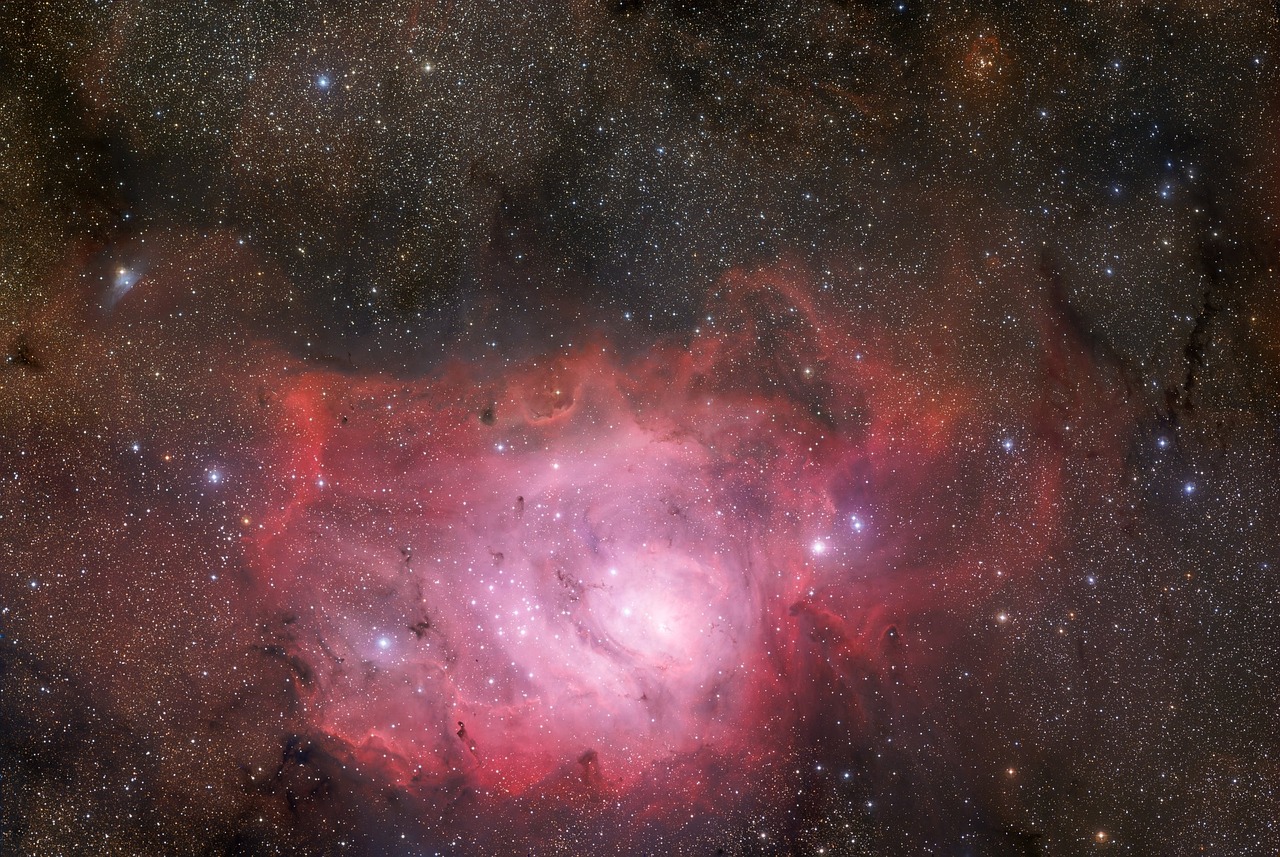
Future of Robotic Lunar Exploration
The future of robotic lunar exploration is poised to be incredibly exciting and transformative. As we look ahead, advancements in technology are expected to empower robots to perform a multitude of complex tasks on the Moon. This evolution will not only enhance our understanding of lunar geology but also lay the groundwork for sustainable human presence. Imagine robots that can autonomously navigate the rugged lunar terrain, analyze soil samples, and even construct habitats! The possibilities are endless.
One of the most promising aspects of future lunar exploration is the concept of in-situ resource utilization (ISRU). This approach involves robotic systems extracting and processing local resources, such as water ice, to support human missions. For instance, robots could be designed to identify and mine water ice located in permanently shadowed craters, which could then be converted into drinking water or even oxygen for breathing. This capability would significantly reduce the need to transport supplies from Earth, making lunar missions more feasible and cost-effective.
Moreover, as we develop more sophisticated robotic systems, we can expect to see an increase in collaborative missions. These missions will involve multiple robots working together seamlessly, sharing data and tasks. For example, one robot might focus on mapping the lunar surface, while another analyzes soil samples in real-time. This collaborative approach not only enhances efficiency but also allows for more ambitious exploration goals, such as establishing a permanent lunar base.
| Key Technologies for Future Lunar Robots | Potential Applications |
|---|---|
| Advanced AI Algorithms | Autonomous navigation and decision-making |
| Robust Communication Systems | Real-time data transmission to Earth |
| Modular Robotics | Flexible design for various tasks |
| Resource Extraction Tools | Mining and processing lunar materials |
As we venture further into the cosmos, the role of robotics in lunar exploration will only grow. The integration of cutting-edge technologies will enable robots to conduct extensive surveys and experiments without the limitations posed by human presence. For instance, robots equipped with sophisticated sensors can analyze the Moon's regolith for signs of useful minerals or even biological materials, providing invaluable data for future missions.
In summary, the future of robotic lunar exploration is bright and full of potential. With advancements in technology and a focus on collaboration, robots will play a crucial role in paving the way for humans to thrive on the Moon. As we continue to explore our celestial neighbor, these robotic pioneers will help unlock the secrets of the lunar surface, ensuring that humanity’s next steps on the Moon are informed, sustainable, and successful.
- What is in-situ resource utilization (ISRU)? ISRU refers to the practice of utilizing resources found on the Moon, such as water ice, to support human missions and reduce reliance on supplies from Earth.
- How will robots help in future lunar missions? Robots will assist in various tasks, including navigation, data collection, habitat construction, and resource extraction, making lunar exploration more efficient and sustainable.
- What technologies are crucial for future lunar robots? Key technologies include advanced AI, robust communication systems, modular robotics, and specialized tools for resource extraction.
- Will robots work together during lunar missions? Yes, future missions are expected to involve collaborative robotics, where multiple robots will work together to achieve complex objectives.
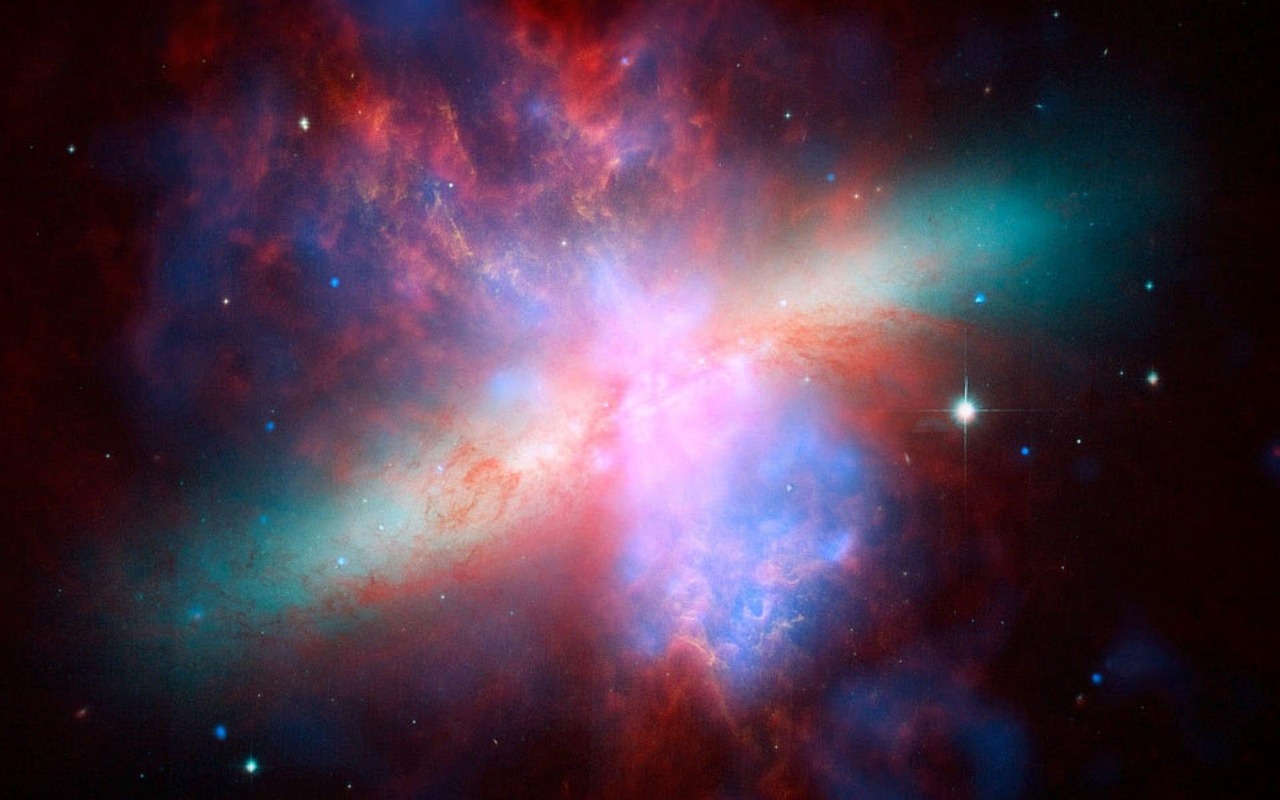
The Role of AI in Robotic Space Exploration
Artificial Intelligence (AI) is revolutionizing the landscape of robotic space exploration. Imagine sending a robot to a distant planet, and it not only navigates its terrain but also makes critical decisions on its own! This is not just a futuristic dream; it’s happening right now. AI empowers robots to operate autonomously, allowing them to analyze their surroundings, make real-time decisions, and adapt to unexpected challenges without waiting for instructions from Earth. This leap in technology is crucial, especially as we venture further into the cosmos, where communication delays can span minutes or even hours.
One of the most exciting aspects of AI in space exploration is its ability to enhance data analysis. Robotic missions collect vast amounts of data, from atmospheric readings to geological samples. Traditionally, this data would be sent back to Earth for analysis, a process that could take considerable time. However, with AI-driven systems, robots can analyze data on-site, identifying patterns and anomalies that might lead to groundbreaking discoveries. For instance, AI algorithms can sift through Martian soil samples to detect the presence of organic compounds, providing insights into the planet's potential for past life.
Moreover, AI plays a pivotal role in autonomous navigation systems. These systems allow robots to traverse complex terrains without human intervention. Picture this: a rover navigating the rocky surface of Mars, avoiding obstacles and selecting the best path forward all on its own! This capability is essential for missions to distant planets and moons, where real-time communication is limited, and delays can hinder decision-making. With AI, these robots can operate more like autonomous explorers, making them invaluable assets in our quest to understand the universe.
As we look to the future, the integration of AI in robotic space missions promises even more advancements. Imagine robots equipped with machine learning capabilities that continuously improve their performance based on previous missions. The potential for innovation is staggering. AI not only enhances the efficiency of current missions but also opens doors to new exploration strategies that were once deemed impossible.
In summary, the role of AI in robotic space exploration is multifaceted and transformative. It enables autonomous decision-making, enhances data analysis, and improves navigation. As we continue to push the boundaries of space exploration, the synergy between AI and robotics will undoubtedly lead to groundbreaking discoveries and a deeper understanding of our universe.
- How does AI improve robotic navigation in space?
AI enables robots to analyze their environment in real-time, allowing them to make decisions about the best paths to take without human input. - What are the benefits of AI in data analysis for space missions?
AI can process and analyze vast amounts of data on-site, leading to quicker insights and discoveries without the delays associated with sending data back to Earth. - Will AI replace human involvement in space exploration?
While AI enhances robotic capabilities, human oversight will still be crucial for strategic decision-making and scientific inquiry.

Autonomous Navigation Systems
Autonomous navigation systems are revolutionizing the way robotic explorers traverse the vast, uncharted territories of space. Imagine sending a robot to a distant planet or moon, where human intervention is not just impractical but nearly impossible due to communication delays and the sheer distance involved. This is where autonomous navigation comes into play, allowing robots to make real-time decisions based on their surroundings.
At the heart of these systems is a combination of advanced algorithms, sensors, and artificial intelligence. These components work together to create a robust framework that enables robots to analyze their environment, identify obstacles, and plot safe paths to their destinations. For instance, the Mars rovers, like Curiosity and Perseverance, utilize sophisticated navigation systems that allow them to traverse rocky terrains and avoid hazards without waiting for commands from Earth.
To better understand how autonomous navigation systems function, consider the following key elements:
- Sensor Integration: Robots are equipped with a variety of sensors, including cameras, LIDAR, and accelerometers, which provide real-time data about the environment.
- Path Planning Algorithms: These algorithms analyze the sensor data to determine the most efficient route while avoiding obstacles.
- Real-Time Decision Making: With AI, robots can adapt to changing conditions, making decisions on the fly, which is crucial in unpredictable environments.
One of the most remarkable aspects of autonomous navigation systems is their ability to learn from experience. As robots explore new terrains, they gather data that can be used to improve future navigation strategies. This learning capability not only enhances the efficiency of current missions but also sets the stage for more complex explorations in the future.
In summary, autonomous navigation systems are a game-changer in space exploration, enabling robots to operate independently in environments that are often hostile and unpredictable. As technology continues to evolve, we can expect these systems to become even more sophisticated, further enhancing our ability to explore the cosmos.
- What are autonomous navigation systems? Autonomous navigation systems are technologies that allow robots to navigate and make decisions in real-time without human intervention.
- How do these systems work? They use a combination of sensors, algorithms, and artificial intelligence to analyze the environment and plot safe paths.
- What are some examples of robots using autonomous navigation? Mars rovers like Curiosity and Perseverance utilize these systems to traverse the Martian landscape.

Data Analysis and Interpretation
The vast amount of data collected by robotic missions in space can be overwhelming, but thanks to artificial intelligence, we are now able to sift through this information with remarkable efficiency. Imagine trying to find a needle in a haystack; that’s what scientists face when analyzing data from distant planets and moons. AI-driven tools act as our modern-day magnets, drawing out the most relevant and significant findings from the sea of information.
These AI systems are designed to recognize patterns, anomalies, and trends in the data. For instance, when a rover like Curiosity collects soil samples, it doesn’t just send back raw data; it sends back a wealth of information that needs to be interpreted. AI algorithms can quickly analyze the chemical compositions found in these samples, comparing them to known benchmarks and identifying any unusual elements that could indicate past life or unique geological processes.
Moreover, the integration of AI in data analysis allows for real-time interpretation. This means that while a mission is ongoing, scientists can receive immediate feedback about the data being collected. This capability is crucial for making informed decisions on the fly, such as adjusting the mission parameters or directing the robotic systems to areas of greater interest. For example:
- Real-time adjustments: If a rover discovers an unexpected mineral, the mission team can quickly decide to investigate further.
- Enhanced accuracy: AI can reduce human error in data interpretation, ensuring that findings are reliable.
- Predictive analytics: AI can model potential outcomes based on current data, helping scientists anticipate what they might find next.
Furthermore, the collaboration between AI and human scientists leads to a more profound understanding of our universe. By leveraging AI technologies, researchers can focus on strategic decision-making and hypothesis generation, rather than getting bogged down in the minutiae of data processing. This synergy is what drives innovation in space exploration and allows us to uncover the mysteries of the cosmos more effectively.
As we look to the future of robotic space missions, the role of AI in data analysis and interpretation will only grow. With advancements in machine learning and neural networks, we can expect even more sophisticated tools that will enhance our ability to explore and understand the universe. The possibilities are truly endless, and as we continue to push the boundaries of exploration, AI will be at the forefront of our discoveries.
- What is the role of AI in space exploration? AI helps analyze vast amounts of data collected by robotic missions, enabling faster and more accurate interpretations.
- How does AI improve data analysis? AI algorithms can recognize patterns and anomalies, allowing scientists to focus on significant findings rather than being overwhelmed by raw data.
- What are the benefits of real-time data analysis? Real-time analysis allows for immediate adjustments to mission parameters based on findings, enhancing the overall effectiveness of the mission.
- Will AI replace human scientists in space exploration? No, AI will augment human capabilities, allowing scientists to focus on strategic decision-making while AI handles data processing.

Collaborative Robotics in Space
In the vast expanse of space, where distances are measured in millions of kilometers and conditions are often harsh and unforgiving, the concept of collaborative robotics emerges as a beacon of hope for ambitious exploration goals. Imagine a team of robots, each designed with unique capabilities, working together seamlessly to achieve complex tasks that would be impossible for a single robot to accomplish alone. This synergy not only enhances mission efficiency but also opens up new avenues for exploration, such as constructing habitats on distant planets or conducting intricate scientific experiments.
One of the most compelling examples of collaborative robotics in action is the European Space Agency's Rosetta mission. This mission showcased how multiple robotic systems can work in concert to achieve a common goal: landing on and studying a comet. The Rosetta orbiter and its lander, Philae, cooperated in a way that allowed scientists to gather unprecedented data about the comet's composition and behavior. The mission demonstrated that when robots collaborate, they can tackle challenges that would otherwise be insurmountable, such as navigating the delicate gravitational fields of celestial bodies.
As we look towards the future, the prospects for collaboration in space exploration are incredibly promising. With advancements in artificial intelligence, robots are becoming increasingly capable of performing autonomous tasks while still being able to communicate and coordinate with one another. This means that we can expect to see more missions where robots not only work together but also adapt to changing conditions in real-time. For instance, if one robot encounters an unexpected obstacle, it can inform its companions, allowing them to adjust their actions accordingly.
However, the integration of collaborative robotics in space exploration also brings forth a set of challenges. These include the need for robust communication systems that can function in the vacuum of space, as well as the development of algorithms that enable effective cooperation among robots. Ethical considerations also play a vital role, as we must ensure that these autonomous systems operate safely and responsibly in environments that may one day be inhabited by humans.
In summary, collaborative robotics represents a revolutionary approach to space exploration. By enabling multiple robots to work together, we can tackle more ambitious missions, gather more data, and ultimately deepen our understanding of the universe. As we continue to innovate and refine these technologies, the possibilities for what we can achieve in space are truly limitless.
- What is collaborative robotics? Collaborative robotics refers to multiple robots working together to accomplish tasks that require coordination and communication.
- How does collaborative robotics benefit space exploration? It enhances mission efficiency, allows for more complex tasks, and enables the gathering of more comprehensive data.
- What are some examples of collaborative robotics in space? The Rosetta mission by the European Space Agency is a prime example, where the orbiter and lander worked together to study a comet.
- What challenges do collaborative robots face in space? Challenges include communication in space, developing algorithms for cooperation, and ethical considerations regarding autonomous decision-making.
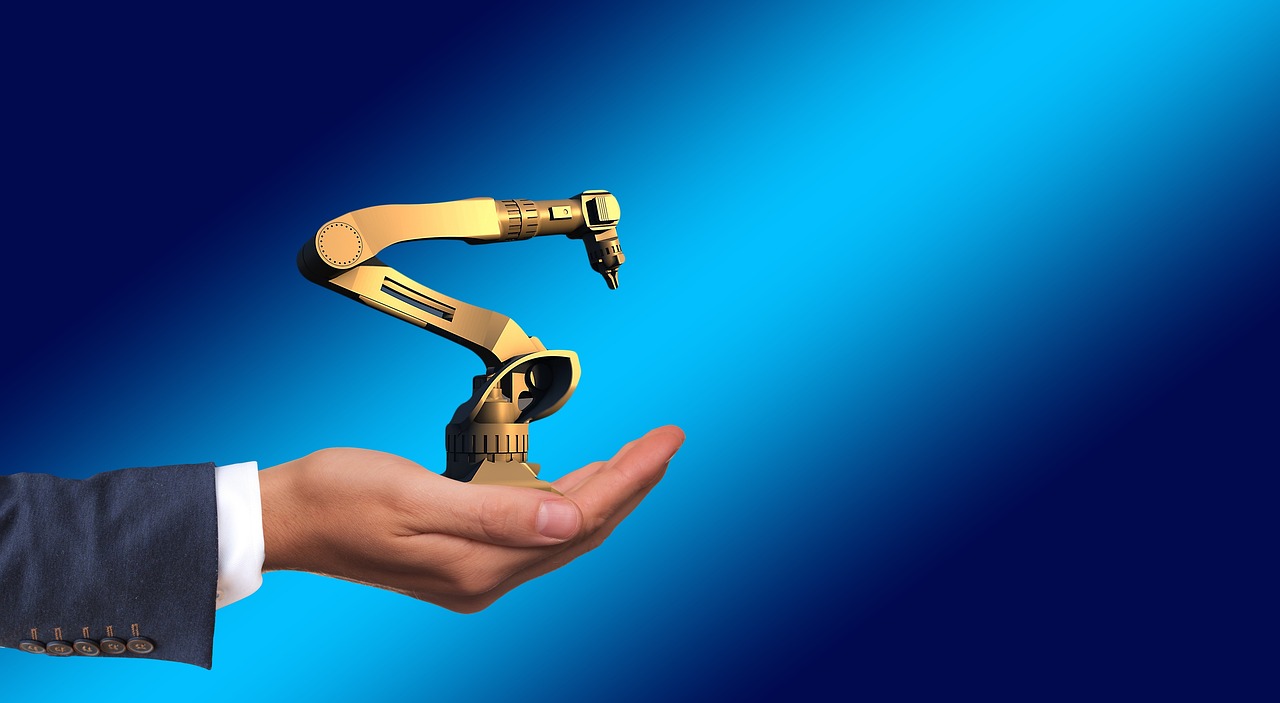
Examples of Collaborative Missions
Collaborative missions in space exploration stand as a testament to the power of teamwork, even in the vastness of the cosmos. One of the most notable examples is the European Space Agency's Rosetta mission, which successfully orbited and landed on the comet 67P/Churyumov-Gerasimenko. This mission involved multiple robotic systems working in harmony: the Rosetta orbiter provided a comprehensive view of the comet, while the Philae lander conducted surface analysis. Together, they gathered invaluable data that has reshaped our understanding of comets and their role in the solar system.
Another significant example of collaborative robotics is the International Space Station (ISS). Here, various robotic systems, such as the Canadarm2 and Dextre, work alongside astronauts to perform tasks that would be dangerous or impossible for humans alone. The Canadarm2, a robotic arm, is essential for maneuvering cargo and assisting in repairs, while Dextre, often referred to as the "dual-arm" robot, is designed to handle delicate operations outside the ISS. This collaboration not only enhances operational efficiency but also ensures the safety of human crew members.
Moreover, the Mars 2020 mission, which features the Perseverance rover, is another example where robotics collaborates with human engineers on Earth. The rover is equipped with advanced technologies and is designed to work autonomously, yet it relies on data and commands from its human counterparts. This synergy between human insight and robotic execution allows for more sophisticated exploration of the Martian surface, paving the way for future missions aimed at uncovering the planet's secrets.
In conclusion, the examples of collaborative missions illustrate how robotics can amplify the capabilities of space exploration. By integrating multiple robotic systems, space agencies can achieve complex objectives that would be challenging for a single entity. As technology continues to advance, we can expect even more innovative collaborations that will push the boundaries of what is possible in our quest to explore the universe.
- What is the significance of collaborative missions in space exploration?
Collaborative missions enhance efficiency, safety, and the ability to achieve complex objectives through the combined efforts of multiple robotic systems. - How do robots communicate with each other during missions?
Robots are programmed with communication protocols that allow them to share data and coordinate tasks, often using radio signals or onboard systems. - What are some challenges faced by collaborative robotic missions?
Challenges include ensuring seamless communication, managing the autonomy of each robot, and addressing unforeseen technical issues that may arise during missions. - Will human-robot collaboration increase in future space missions?
Absolutely! As technology evolves, we can expect to see more sophisticated collaborations between humans and robots, enhancing our exploration capabilities.

Future Prospects for Collaboration
The future of space exploration is poised to witness an exciting evolution in the way robots and humans collaborate. As we push the boundaries of our understanding of the universe, the synergy between human ingenuity and robotic efficiency will become increasingly vital. Imagine a scenario where humans and robots work side by side, each contributing their unique strengths to tackle the challenges of extraterrestrial environments. This collaboration will not only enhance the safety and efficiency of missions but will also open up new avenues for discovery.
One of the most promising aspects of future collaboration is the development of hybrid teams. These teams will consist of both human operators and autonomous robots, each designed to perform specific tasks. For instance, while robots may handle the heavy lifting and perform intricate tasks in hazardous conditions, humans can focus on strategic planning, scientific investigation, and decision-making. This division of labor will allow missions to be executed more effectively, minimizing risks and maximizing outcomes.
Moreover, advancements in communication technologies will facilitate real-time collaboration, even when robots are light-years away. Enhanced data transmission methods will enable scientists to interact with robotic systems instantaneously, allowing for adjustments and real-time feedback during missions. Think of it as a dance between humans and machines, where each partner responds to the other's movements, creating a harmonious exploration experience.
In addition, the integration of machine learning and artificial intelligence will empower robotic systems to learn from their experiences and adapt to new environments. As robots gather data and encounter unforeseen challenges, they will be able to refine their algorithms, improving their performance over time. This self-improving capability will be crucial for missions to distant planets, where conditions can be unpredictable and require quick adjustments.
As we envision these future collaborations, it’s essential to consider the ethical implications that come with it. Establishing clear guidelines for human-robot interactions will be vital to ensure that both parties can work together safely and effectively. This involves not only technical considerations but also a deep understanding of how autonomy and decision-making will be shared between humans and machines.
In summary, the future prospects for collaboration in space exploration are not just about enhancing mission capabilities; they are about forging a new partnership between humans and robots. As we stand on the brink of this new era, the possibilities are as vast as the universe itself, promising exciting discoveries and advancements that will redefine our place in the cosmos.
- What is the role of robotics in space exploration? Robotics plays a crucial role in space exploration by enabling missions to gather data, perform complex tasks, and operate in environments that are inhospitable to humans.
- How do robots collaborate with humans in space missions? Robots and humans can work together through hybrid teams, where robots handle physical tasks while humans focus on strategic decision-making and scientific inquiry.
- What advancements are being made in robotic technologies? Innovations in artificial intelligence, machine learning, and autonomous navigation are significantly enhancing the capabilities of robotic systems in space exploration.
- What are the ethical considerations of using robots in space? Ethical considerations include the level of autonomy granted to robots, accountability in decision-making, and the impact on future human exploration efforts.

Ethical Considerations in Robotic Exploration
As we venture deeper into the cosmos with the help of robotics, we must confront a series of ethical dilemmas that arise from the integration of these advanced technologies into space exploration. One of the primary concerns is the level of autonomy granted to robotic systems. When robots are programmed to make decisions independently, it raises questions about accountability. For instance, if a robotic probe makes a decision that leads to unintended consequences, who is responsible? The developers, the operators, or the machines themselves? Establishing clear guidelines for robotic behavior is essential to navigate these murky waters.
Moreover, as we equip robots with the capability to explore and potentially colonize other planets, we must consider the impact on extraterrestrial environments. The preservation of these uncharted territories is crucial, not just for scientific integrity but also for ethical stewardship. Imagine if we were to disrupt a delicate ecosystem on Mars or the Moon—what implications would that have for our understanding of life beyond Earth? To mitigate such risks, it’s vital to develop protocols that prioritize environmental protection alongside exploration.
Another pressing issue is the potential for human dependency on robotic systems. As we become increasingly reliant on these technologies, we risk losing essential skills and knowledge. This dependency could lead to a scenario where humans may not be equipped to handle situations that require critical thinking and problem-solving, especially in high-stakes environments like space. Therefore, it’s important to strike a balance between utilizing robotic assistance and maintaining human involvement in exploration efforts.
Additionally, the ethical implications of resource extraction from celestial bodies must be addressed. As we look to the Moon and Mars for resources, it’s crucial to consider the long-term effects of such actions. Are we prepared to exploit these environments for our gain, and what responsibilities do we hold towards preserving them for future generations? A comprehensive framework that includes international collaboration and ethical guidelines will be essential in ensuring that our endeavors are sustainable and respectful of the cosmos.
In summary, as we embrace the future of robotic exploration, we must navigate a complex landscape of ethical considerations. These include:
- Accountability in autonomous decision-making
- Environmental preservation of extraterrestrial sites
- Human dependency on robotic systems
- Ethical resource extraction practices
By addressing these challenges proactively, we can ensure that our exploration of the universe is not only scientifically fruitful but also ethically sound.
| Question | Answer |
|---|---|
| What are the main ethical concerns regarding robotic exploration? | The primary concerns include accountability for autonomous decisions, environmental preservation, human dependency on robots, and ethical resource extraction. |
| How can we ensure robots do not harm extraterrestrial environments? | By developing strict protocols and guidelines that prioritize environmental protection and sustainability during exploration missions. |
| What role does international collaboration play in ethical exploration? | International collaboration helps establish a unified framework for ethical guidelines and resource management, promoting responsible exploration practices. |
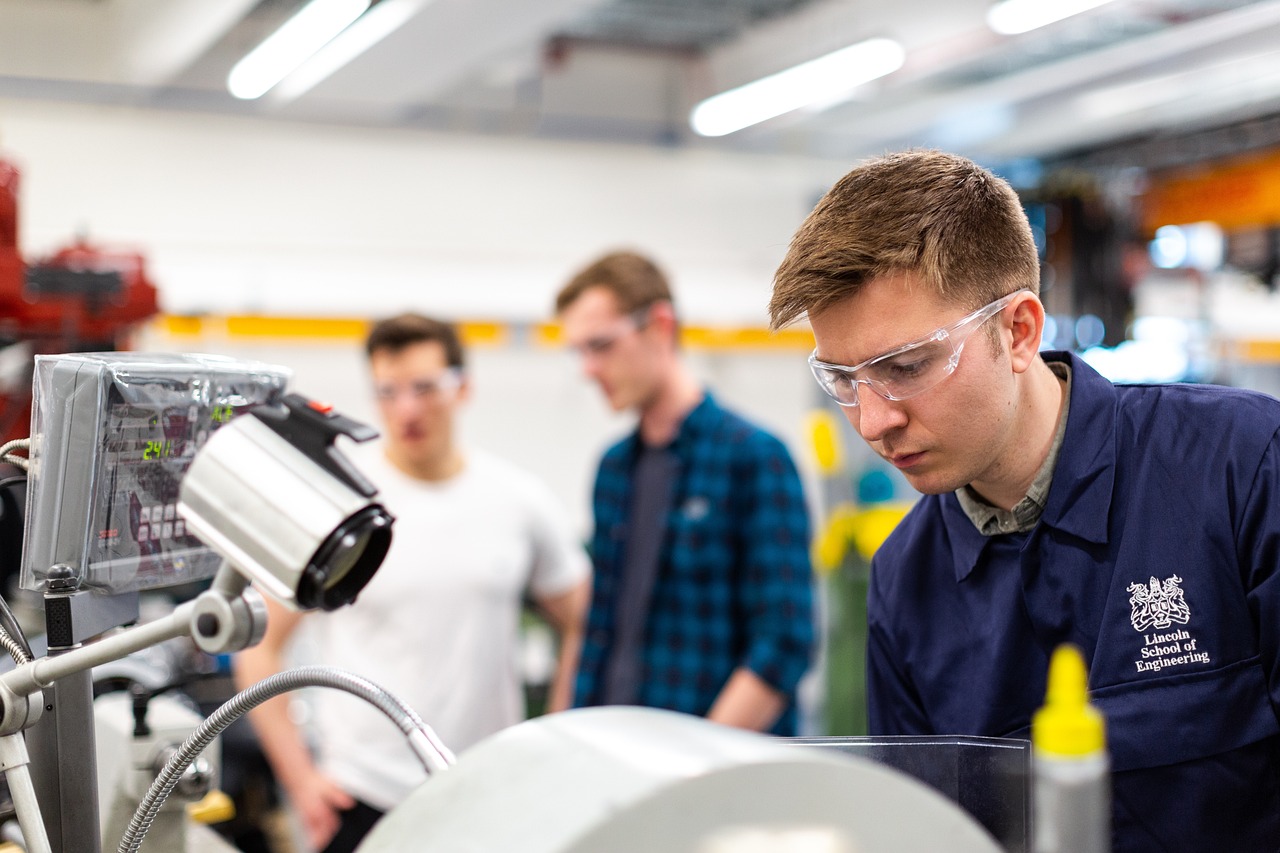
Autonomy and Decision-Making
As we venture deeper into the cosmos, the autonomy of robotic systems becomes a crucial topic of discussion. Imagine sending a robot to Mars, and it encounters an unexpected dust storm. Should it wait for instructions from Earth, which could take several minutes, or should it make a split-second decision to seek shelter? This scenario exemplifies the importance of autonomous decision-making in space exploration.
The level of autonomy granted to robotic systems raises significant questions about accountability and the ethical implications of their decisions. When robots are given the ability to act independently, who is responsible if something goes wrong? Is it the engineers who designed the algorithms, the scientists who deployed the robot, or the robot itself? These questions are not just theoretical; they have real-world implications for future missions.
To address these concerns, researchers and space agencies are actively working on establishing guidelines for robotic behavior. These guidelines aim to ensure that robots can make safe and effective decisions while minimizing risks. Here are some key considerations:
- Decision-Making Frameworks: Developing frameworks that allow robots to evaluate situations and choose the best course of action based on predefined criteria.
- Fail-Safe Mechanisms: Implementing systems that ensure robots can revert to a safe mode in case of uncertainty or malfunction.
- Human Oversight: Maintaining a level of human oversight where operators can intervene if necessary, especially in critical situations.
Moreover, as robotic missions evolve, the integration of machine learning and artificial intelligence will enhance the decision-making capabilities of these systems. By analyzing vast amounts of data from their surroundings, robots can learn from their experiences and improve their responses to similar situations in the future. This adaptability is vital for navigating the unpredictable environments of other planets, where conditions can change rapidly.
In summary, while the autonomy of robotic systems in space exploration offers exciting possibilities, it also presents a host of ethical and operational challenges. Striking the right balance between autonomy and human oversight will be essential for the success of future missions. As we continue to push the boundaries of what is possible in space, understanding and addressing these issues will pave the way for safer and more effective exploration.
- What is robotic autonomy in space exploration?
Robotic autonomy refers to the ability of robots to make decisions and act independently without real-time human intervention, especially in unpredictable environments. - Why is decision-making important for robotic missions?
Effective decision-making allows robots to respond quickly to changes in their environment, enhancing mission success and safety. - What ethical concerns arise from autonomous robots?
Key ethical concerns include accountability for decisions made by robots, the potential for errors, and the implications for future human exploration.

Impact on Human Exploration
The integration of robotics in space exploration is not just a technological advancement; it is a paradigm shift that profoundly influences the future of human exploration. As we stand on the brink of interplanetary travel, the role of robots becomes increasingly critical. They serve as our eyes and ears, exploring hostile environments and gathering essential data that would be perilous for humans to collect directly. Imagine sending a robot to the surface of Mars, where it can analyze soil samples and assess environmental conditions long before a human sets foot on the planet. This not only enhances our safety but also significantly reduces the risks associated with human missions.
Moreover, the data collected by robotic missions informs the planning of future human expeditions. For instance, the findings from the Curiosity Rover have guided the design and objectives of the Perseverance Rover, which aims to search for ancient microbial life. This kind of preparatory work is crucial, as it allows scientists to strategize the best approaches for human exploration, ensuring that our first steps on other celestial bodies are informed and safe.
Robotics also plays a vital role in resource management. As we look towards establishing a sustainable human presence on the Moon or Mars, robots will be essential for in-situ resource utilization (ISRU). They can identify and extract water, minerals, and other materials necessary for sustaining life and supporting human activities. This capability not only reduces the need to transport supplies from Earth but also opens up the possibility of creating habitats that can support long-term human exploration.
However, the impact of robotics on human exploration extends beyond mere logistics and safety. It raises profound ethical considerations regarding the preservation of extraterrestrial environments. As we deploy more robotic systems, we must consider how these machines interact with and potentially alter the landscapes they explore. Establishing guidelines for responsible exploration is essential to ensure that we do not inadvertently cause harm to other worlds. The collaboration between robots and humans will be paramount as we navigate these ethical waters, balancing our thirst for discovery with our responsibility as stewards of the universe.
In summary, the impact of robotics on human exploration is multifaceted. It enhances safety, informs mission planning, facilitates resource management, and raises important ethical questions. As we continue to push the boundaries of space exploration, the synergy between human ingenuity and robotic technology will be crucial in shaping our journey into the cosmos.
- How do robots contribute to space exploration? Robots perform tasks that are too dangerous or impossible for humans, gather data, and prepare for future human missions.
- What role does AI play in robotic missions? AI enables robots to make autonomous decisions, navigate complex terrains, and analyze vast amounts of data efficiently.
- Are there ethical concerns with robotic exploration? Yes, ethical considerations include accountability in decision-making and the preservation of extraterrestrial environments.
- How do robotic missions affect human colonization efforts? Robotic missions provide critical data that informs planning for human missions, ensuring safety and resource management.
Frequently Asked Questions
- What is the role of robotics in space exploration?
Robotics plays a crucial role in space exploration by enhancing mission capabilities, conducting research, and enabling discoveries beyond our planet. Robotic systems are used for tasks that are too dangerous or complex for humans, such as analyzing the surface of Mars or exploring the Moon.
- How have advancements in robotic technology impacted space missions?
Recent advancements in AI, materials, and sensor technology have significantly improved the efficiency and autonomy of robotic systems. These innovations allow robots to operate more independently, make real-time decisions, and carry out complex tasks, enhancing the overall success of space missions.
- What are some examples of robotic missions to Mars?
Robotic missions to Mars include the Curiosity Rover and the Perseverance Rover. These rovers have provided invaluable data about the planet's geology, climate, and potential for past life, helping scientists understand Mars better and paving the way for future human exploration.
- What challenges do robotic missions face on Mars?
Robotic missions to Mars encounter several challenges, including harsh environmental conditions like extreme temperatures and dust storms, as well as communication delays with Earth. Overcoming these hurdles is essential for the success and safety of future missions.
- How is robotics used in lunar exploration?
Robotics is vital in lunar exploration, with missions utilizing robotic landers and rovers to gather data and analyze resources. These robotic systems help assess the Moon's potential for human colonization and resource utilization, paving the way for sustainable exploration.
- What is the significance of AI in robotic space exploration?
AI enhances robotic space exploration by enabling autonomous decision-making, improving navigation, and facilitating data analysis. This allows robots to adapt to unforeseen challenges and process vast amounts of data, leading to new discoveries about celestial bodies.
- What are collaborative robotics in space?
Collaborative robotics involves multiple robots working together to accomplish complex tasks, enhancing mission efficiency. This approach allows for more ambitious exploration goals, such as constructing habitats on other planets, by leveraging the strengths of different robotic systems.
- What ethical considerations arise from robotic exploration?
As robotics becomes integral to space exploration, ethical considerations regarding autonomy and decision-making emerge. Questions about accountability and the impact on future human colonization efforts must be addressed to ensure responsible exploration of extraterrestrial environments.

